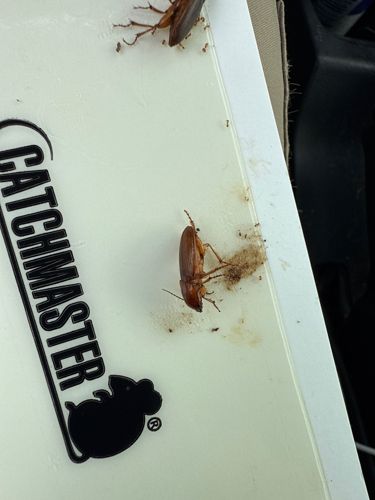Cockroach
Scientific Name: Blattodea (Order contains various genera/species)
Order & Family: Order Blattodea, Family Blattidae (likely based on appearance, though specific species identification is difficult from the image)
Size: Typically 1.5 cm to 5 cm (0.6 to 2 inches) depending on the species.

Natural Habitat
Warm, humid environments, often indoors in kitchens, bathrooms, basements, and behind appliances; also found outdoors in decaying organic matter or leaf litter.
Diet & Feeding
Omnivorous scavengers. They eat almost anything, including food scraps, decaying matter, grease, crumbs, pet food, paper, fabric, and glue.
Behavior Patterns
Nocturnal; they hide in cracks and crevices during the day and emerge at night to forage for food and water. They are known for rapid reproduction and can quickly infest an area. They are attracted to damp and dark places.
Risks & Benefits
Risks: Cockroaches are considered pests. They can carry and spread bacteria, allergens, and pathogens, contributing to asthma and other allergic reactions, and potentially transmitting diseases like salmonella and E. coli. They can also contaminate food and surfaces. Benefits: In certain ecosystems, some cockroach species contribute to the decomposition of organic matter, acting as detritivores.
Identified on: 9/19/2025